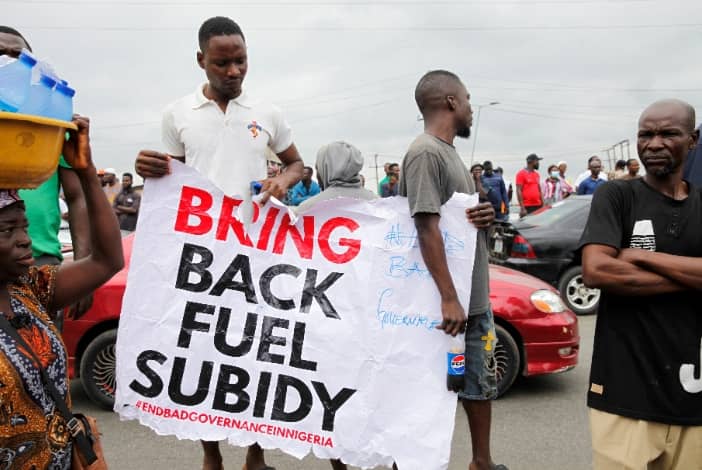By Sakariyah, Ridwanullah
The Nigerian state has subsidised petrol since the 1970s, keeping pump prices artificially low to protect citizens from global oil shocks. But the books tell a darker story. According to the Nigeria Extractive Industries Transparency Initiative (NEITI), between 2005 and 2021 the country spent ₦13.697 trillion on subsidies. NEITI’s 2022 Executive Secretary, Orji Ogbonnaya Orji, explained that this amount could have built at least three modern refineries with the capacity to process 450,000 barrels of crude per day – plants that might have freed Nigeria from its humiliating reliance on imported fuel. Instead, Nigeria remains the only major oil producer that is still importing refined products on such a scale.
In 2022, the hole deepened. For instance, the Petroleum Products Pricing Regulatory Agency put subsidy costs at around ₦4 trillion that year alone (nearly a quarter of the federal budget). To put that in perspective, the government’s allocation to education, health and infrastructure combined was less. The International Monetary Fund (IMF) reports in its 2022 Article IV Consultation Report that subsidy payments swallowed up about 2.2 percent of GDP, and the Brookings Institution reported in 2012 that subsidies consumed 30 percent of government expenditure and more than 100 percent of the capital budget. Instead, fuel consumed more than bridges, hospitals, and classrooms if put together. What an irony!
But the irony is bitter: the poor hardly benefit. NEITI reported that, 90 percent of the subsidy advantage flows to the richest Nigerians, that is, those who drive multiple and exotic cars, run large generators, or manage heavy industries. The poorest, who often rely on public transport or kerosene, receive less than 4 percent of the benefits. “Subsidy in Nigeria is a reverse Robin Hood; it ro18 robs the poor to pay the rich,” economist Bismarck Rewane observed at a 2019 Channels TV policy forum, underlining how subsidy entrenches inequality rather than easing it.
READ ALSO: SERAP demands full disclosure of N14tn fuel subsidy savings from Governors, Wike
However, for politicians, subsidies have long been a vote magnet. Campaigns after campaigns, manifestos after manifestos have always promised to “protect the poor” by resisting subsidy cuts. Yet behind the curtain, reports of corruption, inflated import bills, and fraudulent claims have plagued the system. A 2012 House of Representatives probe alleged billions lost to “phantom fuel imports.” By 2016, Transparency International described Nigeria’s subsidy management as “opaque, distortionary, and riddled with leakages.”
It’s so sad that the opportunity cost is also staggering. Imagine if even half of the ₦13 trillion spent had gone into classrooms or hospitals, the economy will not be as harsh as it has always been. NEITI reported an alternative vision: thousands of solar-powered boreholes, functioning primary health centres, irrigation networks for farmers, research institutes for universities. Instead, Nigeria’s health budget per citizen remains among the lowest in sub-Saharan African countries, while classrooms in villages still hold 80 pupils to a bench. Isn’t this ridiculous?
Interestingly, the breaking point came in 2023. On May 29, in his inauguration speech, President Bola Tinubu declared: “Fuel subsidy is gone.” It was not a debate; it was a decree. Overnight, pump prices tripled, and this led to a spark of anger in streets from Kano to Port Harcourt. Inflation soared above 20 percent, transport costs doubled, food prices spiked. A 2025-Afrobarometer survey found 85 percent of Nigerians disapproved of the subsidy removal, with 58 percent insisting that the government should restore it even if it meant cutting spending on health or education. The discontent was as much about trust as it was about economics; Nigerians had seen too many promises of “redirected savings” vanish into the fog of corruption.
From experts’ perspectives, reform is necessary but fraught with risk. For example, the International Food Policy Research Institute (IFPRI, 2023) reported that subsidy removal without visible compensation deepens poverty and fuels unrest. Again, the IMF, in its 2022 Country Report, projected that if Nigeria continued pricing fuel and electricity below cost, it would lose up to 3 percent of GDP by 2024.
In spite of this, the pain of removal is immediate: higher cost of transportation, rising cost of goods, and salaries that remain frozen.
READ ALSO: Tinubu’s fuel subsidy removal plunged Nigerians into poverty – Atiku
This matter might have arisen from mismanagement. Let’s take a look at it analytically: Nigeria exports crude but imports petrol; we lose money both ways. Refineries in Port Harcourt, Warri, and Kaduna have remained idle or under repair for decades, while soaking billions in “turnaround maintenance” contracts. The much-touted Dangote Refinery, inaugurated in 2023, is yet to fully stabilise supply, and left Nigerians still at the mercy of global fuel prices.
To this conclusion, Nigeria’s subsidy era may come to an end but its lessons will linger on end. It showed how wealth can vanish in smoke, how politics can mask policy failure, and how opportunity, once wasted, is hard to reclaim. Whether subsidy savings now rebuild the nation or sink into familiar shadows will decide if Abiodun (and millions like him) will finally feel the relief they were promised.



